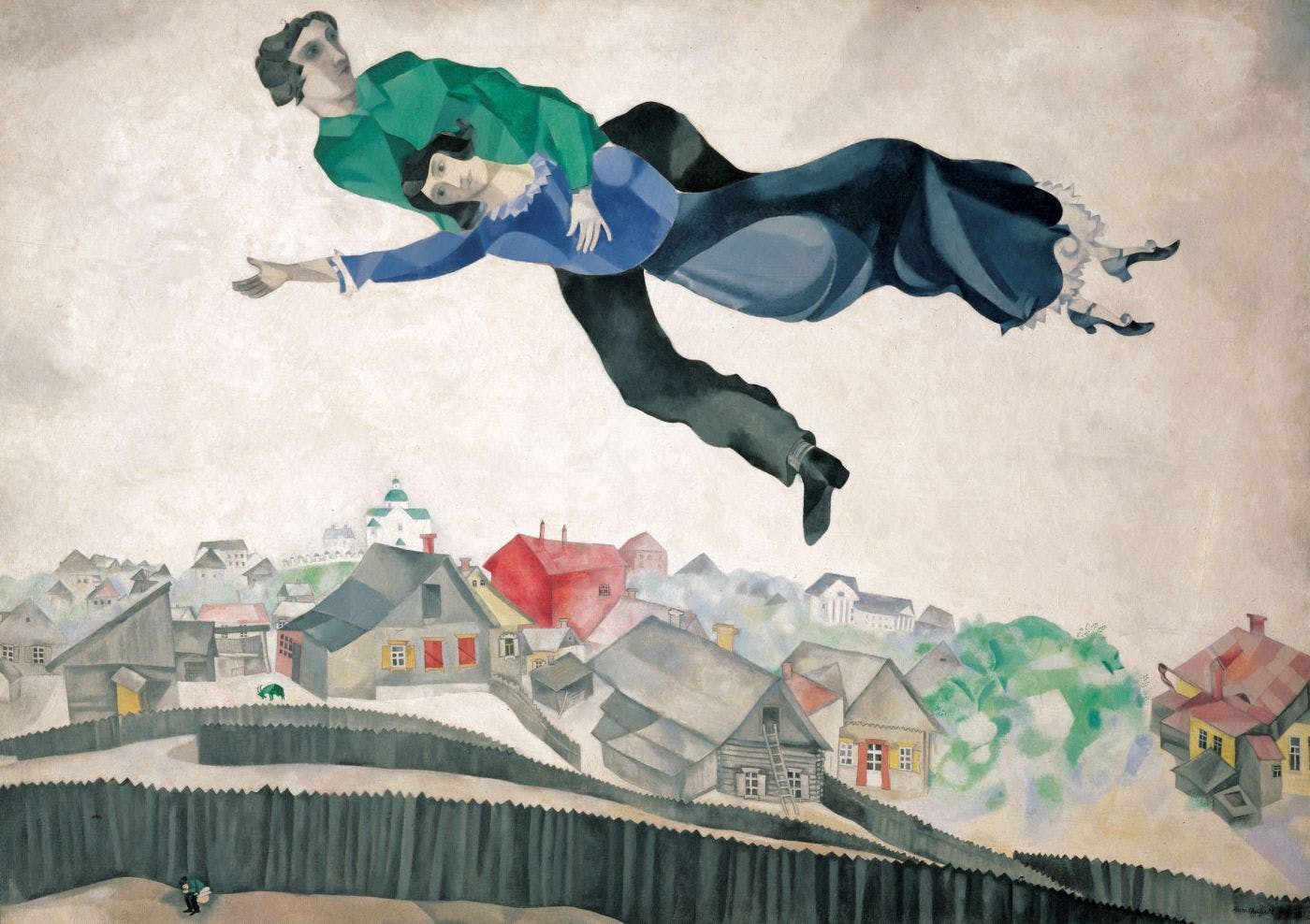Blue nymphs and black squares: visions of a utopia yet to come

In the wake of the Russian revolution, while Bolshevik masses were preoccupied with putting down the White Army and extricating themselves from the ongoing imperialist war, the provincial outpost of Vitebsk (in modern-day Belarus) was home to a different battle.
In the classrooms of its short-lived art school, a small group of resident professors and students constructed competing visions of a utopia yet to come. Colour-saturated compositions of airborne goats and cows collided with a geometric storm of sharp-edged red wedges and solid blocks of black as Fauvist folk dreamer Marc (Moishe) Chagall and avant-garde eccentric Kazimir Malevich vied for the imaginations of a new generation of young artists.
Born to Jewish Hassidic labourers in a traditional town of the Pale, Marc Chagall was empowered by the new revolutionary era, which placed him on the same legal footing as other Russian citizens. In 1918, he was appointed commissar of art in Vitebsk. Tasked with inaugurating a new epoch of proletarian art, Chagall opened the tuition-free People’s Art College.
His lubok-style paintings were not only ethnically Jewish, but distinctively “folk”, combining whiffs of the European avant-garde with dreamy naturalist imagery that appealed to provincial workers and peasants. In his new role as the artistic leader of the city of Vitebsk, Chagall was consumed “with the prodigal spectacle of a dynamic force which pervades the individual from top to bottom, surpassing your imagination”.
On the eve of the first anniversary of the revolution, Vitebsk was painted in bright colours and festooned with 450 posters and flags. “Throughout the town, my multi-coloured animals swung back and forth, swollen with revolution!”, Chagall wrote enthusiastically in his autobiography.
Having made “art descend to the streets”, Chagall’s triumph was followed by tribulations with his fellow teachers. The fly in the ointment was self-proclaimed supremacist Kazimir Malevich. Malevich, a deeply theoretical artistic maverick, combined theosophy and semiotics to create his endpunkt for painting. To Malevich, Chagall’s naturalism and reverie-infused folk paintings seemed neither revolutionary nor advanced.
A political chasm soon emerged between Chagall’s dreamlike, floating figures and Malevich’s red and black squares – and their students’ reactions spilled out of the school and onto the streets. Kids plastered the sides of Vitebsk’s buildings and streetcars with geometric forms and wore black squares sewn on their jackets. In response to Chagall’s “regressive” art, Malevich and his followers established a collective called UNOVIS, or “Affirmers of the New Art”. They designed posters, stage sets and practical materials for the revolution such as a speaker’s rostrum in the form of a diagonal elevator, topped by a billboard shouting “PROLETARIANS”.
On one level, the quarrel between Chagall and Malevich was just another parochial and internecine joust among academics. On another level, the burning question of how to spark people’s imagination of an emancipatory future continued to consume artists, who found themselves increasingly at odds with the Soviet government’s expectations. When Chagall emigrated to France in 1923, he left behind the beginnings of a war against the avant-garde: a counter-revolutionary levelling of society. Malevich soon lost his teaching positions; his works and manuscripts were confiscated, and he was banned from making art.
The vibrant clashes and butting of heads that took place between 1918 and 1922 should be remembered, not as a battle of egos, but as an unprecedented unleashing of artistic creativity that obliterated the elitism of the academy, encouraging workers to engage in radical experimentation both inside the classroom and out on the streets. Despite being short lived, this unbridling of revolutionary artistic energy has not been forgotten and will continue to inspire new generations to visualise a utopia still yet to come.